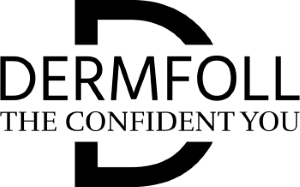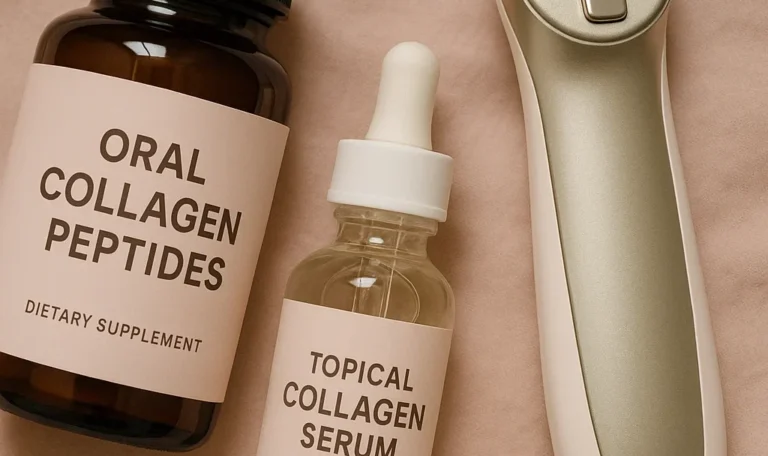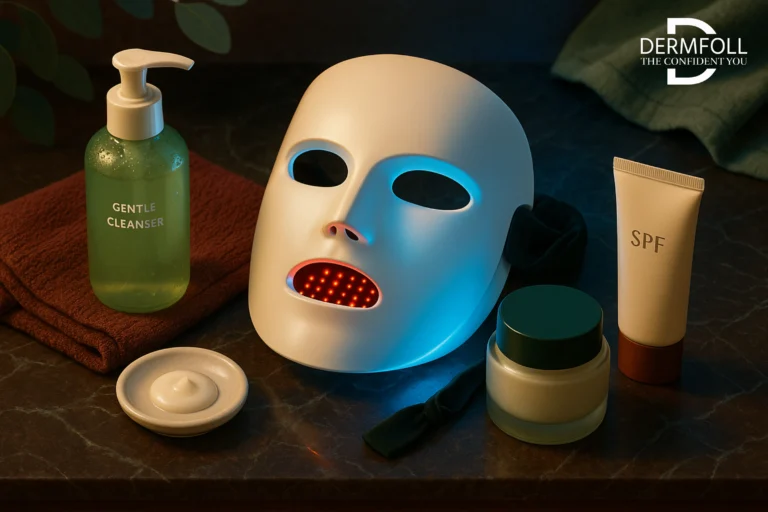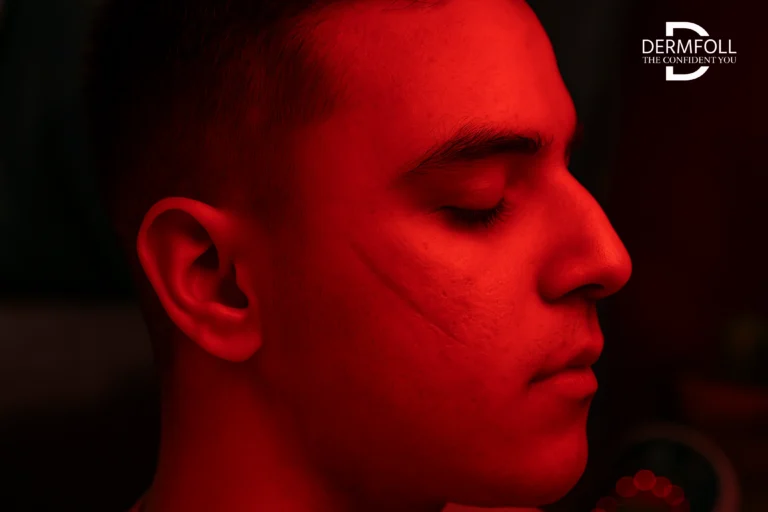As a doctor, I often get asked about radio frequency collagen skin rejuvenation. Spoiler alert: it’s not about chasing fads. It’s about understanding what’s going under the surface—and knowing which tools might genuinely assist. One treatment I’m very thrilled about? Radio frequency collagen skin rejuvenation.
Welcome to Dermfoll, In this essay, I’ll discuss how collagen works, why it starts slacking off as we age, and how new therapies like radio frequency collagen facial and radio frequency skin tightening at home are stepping up to coach your skin back to better health. Plus, I’ll educate you through how a face gadget for wrinkles might fit into your own skincare toolkit.
The idea here isn’t to overwhelm you with jargon or hollow promises. I want you to walk away with a firm, science-backed understanding of how you can support your skin’s natural resilience—whether you’re considering professional treatments or at-home choices.
What Are The Types of Collagen in Dermis? A quick Intro to skincare science
The dermis, the middle layer of the skin. The part that provides structural support and elasticity. Largely due to the 2 specific collagen types. These two types are found in abundance in the dermis, Type I and Type III collagen.
Type I Collagen is prevalent, making up approximately 80% of the collagen in the dermis. In charge of the tensile strength of your dermis. Essential for wound healing. And forms thick fibers that create a scaffold for the skin’s structure.
Type III Collagen, In the minority, yet significant in its contributions. It makes up around 10-15% of the dermal collagen. Type III collagen provides elasticity. And quite important in the early stages of wound healing.
There are few other types found in the dermis, albeit in smaller amounts, include Type V and Type VI Collagen. Type V collagen though found in very low quantities, regulate the size of collagen fibrils.
However, your main focus must be on type I and III
Function of collagen in dermis
Type I Collagen
- Structure
- Thick, rope-like fibers that are densely packed.
- Forms a robust network of fibers that create a strong support for the skin.
- Function
- Provides tensile strength, helps skin recover from stretch and stress.
- maintains skin firmness and integrity.
- Acts as the initial scaffold during wound healing and scar formation.
Type III Collagen
- Structure
- Are thinner, more flexible compared to Type I collagen.
- Act as a supportive network that complements the foundation built by Type I collagen.
- Function
- Elasticity and flexibility, gives the skin its memory foam like characteristic. Making sure the skin return to its original shape.
- Involved in the early stages of wound healing by forming a temporary scaffold.
| Type of Collagen | Location in Skin |
|---|---|
| Type I | Dermis |
| Type III | Dermis |
| Type IV | Basement membrane |
| Type VI | Papillary dermis |
| Type VII | Anchoring fibrils below basement membrane |
| Type II | Primarily in cartilage, occasionally in dermal regions |
| Type V | Dermis |
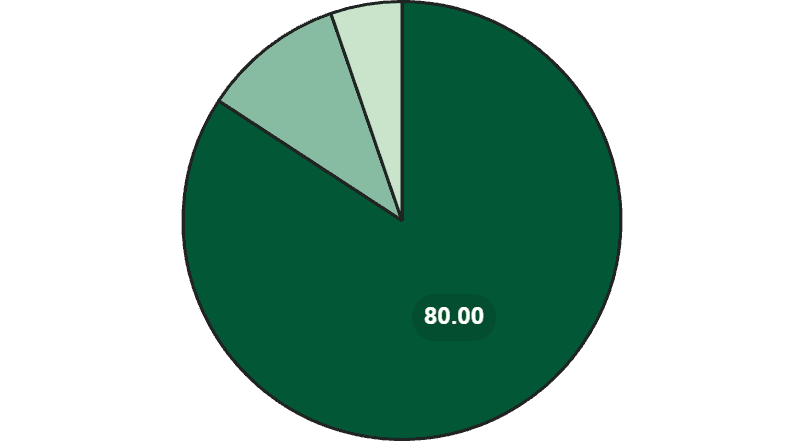
Type I – 80%Type III – 15%Type V – 5%
How Does collagen Change as We Age?
With time and trauma, the composition of our skin undergoes a steady change. Affecting its appearance and altering its functionality. The most apparent changes occur in the amounts, and in the ratios of Type I and Type III collagen in your dermis.
In individuals below the age of 35, Type I collagen predominates. accounting for about 80% of the total collagen. This high concentration of Type I collagen gives firmness and makes it resilient.
Why Does Collagen Decrease With Age?
However, with maturity, the production of Type I collagen gradually decreases. Reaching around 60-70%, resulting in one of the 3 major reasons why aged skin loses its firmness. Which makes your skin more prone to wrinkles and sagging.
Secondly, relative proportion of Type III collagen increases with assent. While it makes up about 10-15% of the dermal collagen in younger age bracket. The proportion rises to around 20-30%. The increase in Type III collagen is a compensatory response to the decrease in Type I collagen. This also indicates changes in the skin’s repair mechanisms and structural organization.
Lastly, decline in the overall synthesis of collagen. And modifications in the existing collagen fibers, such as cross-linking and fragmentation. The combined effect of these alterations is a noticeable increase in the appearance of fine lines and wrinkles.
The Role of Hydration and Elasticity in aging skin
To understand hydration, We must first understand the relationship of skin elasticity with age. In context to skin health. Elasticity is your skin’s ability to return to its original shape after being stretched.
With age and external stressors. Skin’s elastic fibers, composed of collagen and elastin, begin to degrade. This degradation leads to a loss of skin firmness and formation of wrinkles and sagging.
A study on skin visco-elasticity and aging concluded :
- Decreased skin elasticity is directly related to wrinkle formation.
- Reduced elasticity of skin impairs recovery from daily facial movements and expressions. Causing permanent lines and wrinkles.
- This loss of elasticity is often compounded by factors such as UV exposure and pollutants. lifestyle choices like smoking and a poor diets accelerate the degradation of elastic fibers in the skin.
How Radio Frequency Collagen Facial Slow the Breakdown of Collagen
Here’s the good news: technologies like Fractional Radiofrequency (FRF) don’t just boost new collagen, they also help slow down its breakdown.
RF devices work by delivering precisely controlled heat into the dermis, typically raising local tissue temperatures to around 60°C–70°C.
This heat does two important things:
- Tightens existing collagen fibers almost immediately by causing them to contract.
- Stimulates fibroblasts (those collagen-making cells) to start laying down fresh Type I collagen while reorganizing fragmented fibers.
Repeated RF treatments have been shown to slow the enzymatic degradation of collagen by improving the quality and density of the collagen matrix.
It’s like hitting pause on the collagen-aging clock—giving your skin the scaffolding it needs to stay firmer, longer.
In studies, women treated with RF showed a significant reduction in dermal degradation markers and an up to 24.4% increase in dermal thickness, highlighting how effective this heat-triggered remodeling can be.
So while we can’t stop the clock completely, with the right RF treatments, we can definitely slow it way down.
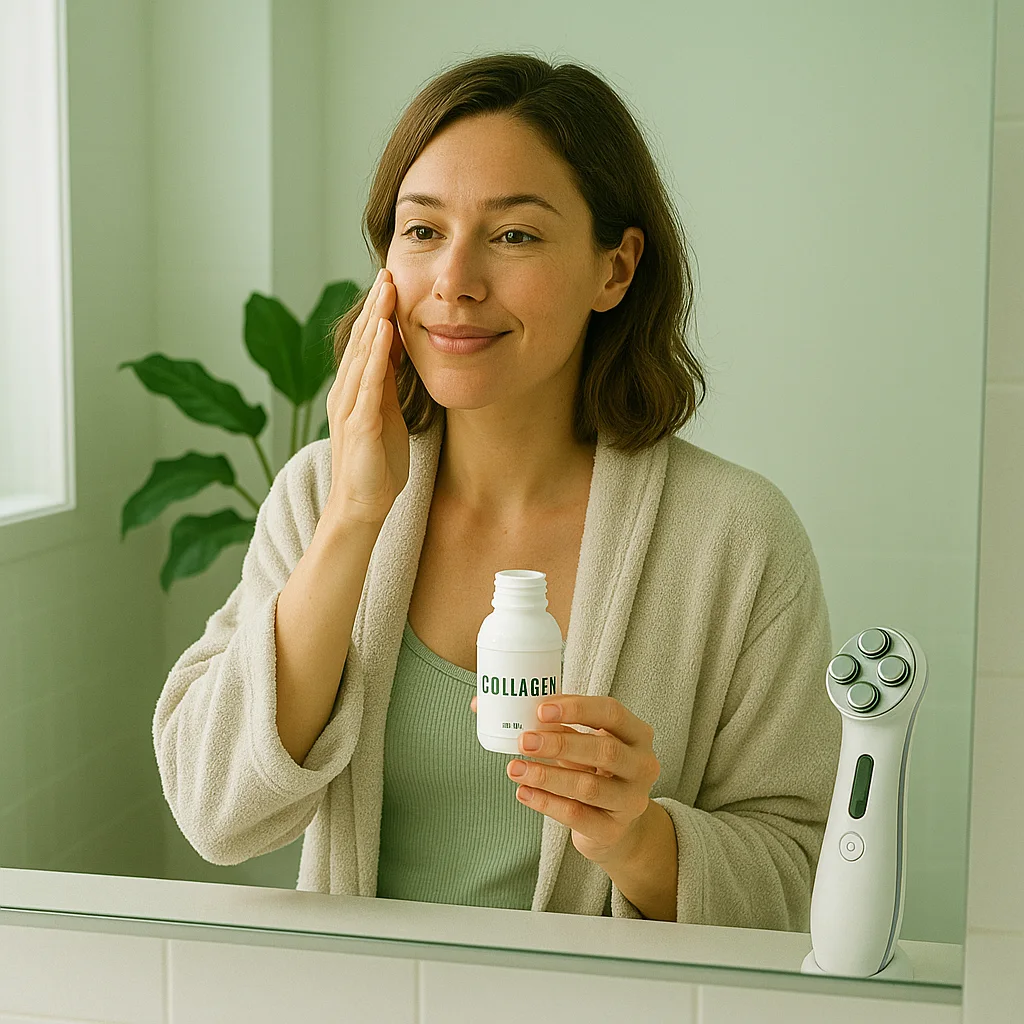
How RF Face Device For Wrinkles Reactivate Collagen Production
Mechanism of radio frequency collagen skin rejuvenation
They use electrode-based technology to deliver precisely controlled thermal energy deep into your dermis, boosting collagen formation where it matters most.
This tiny, focused injury gets your skin’s wound healing response into action, leading to the activation of fibroblasts, fresh collagen production (collagen neogenesis), and remodeling of the dermal matrix.
RF cleverly targets the deeper layers without causing severe damage to the surface, providing serious remodeling with minimal downtime.
Temperature
The sweet place for collagen reactivation? Studies suggest that the magic happens when skin temperatures hit around 60°C to 70°C during RF sessions.
While this particular study didn’t define the exact numbers, this temperature range is crucial for denaturing existing collagen strands and laying the way for stronger, fresher collagen to take over.
Clinical Evidence For Radio Frequency Collagen Facial
In a study on 12 menopausal women (ages 57 to 67), those who paired radio frequency collagen skin rejuvenation with topical and oral collagen saw a substantial 24.4% rise in dermal thickness on the left side of the face and 21.1% on the right side after just 60 days.
Women who utilized RF alone (without collagen) still exhibited considerable gains: 17.7% (left side) and 16.2% (right side).
In comparison, using only collagen without RF resulted to minor gains, topping out at roughly 16.6% to 17.6%.
Multiplicative Effect: Evidence Of Radio Frequency Collagen Skin Rejuvenation
Adding RF to the mix boosted the collagen-boosting effects of collagen by 1.4 to 3.9 times on the left side and 1.1 to 3 times on the right side.
Bottom line: RF doesn’t just aid; it supercharges your skin’s inherent ability to regenerate itself.
Additional Clinical Findings:
Another study quoted here indicated that menopausal women treated with radio frequency collagen skin rejuvenation for four months saw considerable improvements in skin texture and noticeable reduction of facial expression lines a real-world witness to RF-driven remodeling.
RF Face Device For Wrinkles + Collagen Products: A Synergy for Skin Hydration and Firmness
A review on collagen-based materials states how collagen helps in both hydration and elasticity. There are 3 ways how collagen is linked to better hydration and as an extension, Elasticity:
- When it comes to hydration, collagen helps the skin retain moisture. Due to their ability to form barriers, preventing water loss.
- In this study Collagen peptides, which are smaller fragments of collagen protein were tested. They noted that these peptides penetrated the skin and stimulated the production of new collagen fibers.
- Further supporting the skin’s natural repair processes, linking to a resilient and toned complexion.
This study looked specifically into products containing hydrolyzed collagen. Such collagen-boosting ingredients can significantly enhance the skin’s elasticity. Providing all the necessary building blocks for new collagen synthesis.
Radio Frequency Collagen Skin Rejuvenation products’ combined effects
Here’s where things get even more exciting: when fractional radiofrequency (FRF) treatments are paired with topical or oral collagen boosters, they don’t just work, they supercharge each other.
Here’s why:
Micro-injuries produced by RF treatments set off the skin’s natural healing reaction.
For collagen peptides and hydrators to get deeper and boost even more collagen synthesis, these micro-zones are like “open highways”.
In trials, the combination of RF + collagen supplementation showed up to 24.4% improvement in dermal density, greatly surpassing either strategy alone.
Through modifying and tightening skin structure, RF also increases moisture retention in the treated areas. so strengthening the skin’s barrier against water loss.
TL;DR: RF treatments prepare the canvas, and collagen supplements deliver the paint—together creating a plumper, firmer, and more moisturized masterpiece.
Face Device For Wrinkles and Collagen: A Good Duo?
The study skin Visco-elasticity and aging provide evidence that hydrated skin is more resilient. And less prone to develop fine lines and wrinkles. Well hydrated skin maintains its plumpness and elasticity. Smoothing out the surface, and reducing the depth of existing wrinkles
Dry skin, on the other hand, tends to be more fragile and prone to cracking, leading to deeper and more pronounced wrinkles.
Low hydration levels compromise the skin’s barrier function. Being less capable of retaining moisture and more vulnerable to environmental aggressors. This creates a vicious cycle where dry skin worsens the appearance of aging.
| Group | Treatment | Increase in Dermal Thickness (Left Side) | Increase in Dermal Thickness (Right Side) |
|---|---|---|---|
| Group 1 | Oral only, no RF | +9.5% | +10% |
| Group 2 | Topical only, no RF | +4.5% | +5.2% |
| Group 3 | Oral + Topical , no RF | +16.6% | +17.6% |
| Group 4 | Oral + RF | +14.7% | +15.6% |
| Group 5 | Topical + RF | +17.7% | +16.2% |
| Group 6 | Oral + Topical + RF | +24.4% | +21.1% |
- Best Result: Group 6 (oral + topical + RF) → 24.4% (left) and 21.1% (right).
- Without RF, the maximum dermal thickness improvement was around 17.6%.
- RF boosted collagen remodeling by up to 3.9 times compared to collagen alone.
How Radiofrequency Enhances Skin Hydration and Fights Wrinkles
Radiofrequency (RF) isn’t just about tightening—it’s a secret hydration hero too.
When RF heats the dermis to therapeutic temperatures (about 60°C–70°C), it begins a remodeling process that repairs the skin’s extracellular matrix. This enhanced structure enhances the skin’s barrier, lowering transepidermal water loss (TEWL).
Here’s what happens:
Stronger collagen networks following RF treatments help trap more moisture within the skin.
radio frequency collagen skin rejuvenation demonstrates better water retention and enhanced elasticity, making it less prone to wrinkle formation.
In clinical investigations, areas treated with RF and supporting materials like silicon observed over 20% improvements in skin thickness and hydration.
Think about RF and hydration like a tag team:
RF builds the solid, sturdy frame.
Hydration fills it out, making it supple, bouncy, and less prone to cracking and creasing.
In short? Firm skin + moisturized skin = less wrinkles, greater radiance.
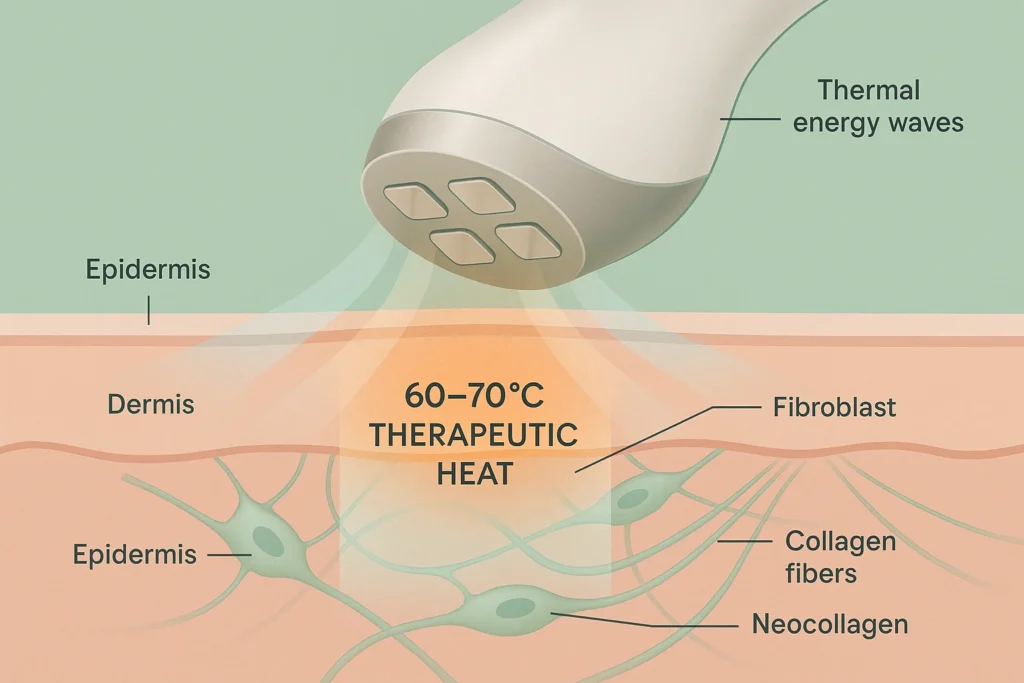
How are skin elasticity measurement made?
Bioengineering technologies have become vital in the current skincare industry. They offer objective and measurable methods to test skin attributes. skin elasticity test face a lot of scrutiny to be as accurate as possible.
Which makes it easier to confirm the effectiveness of products. And also helps put our minds at ease before we commit to a product or a service.
The studies mentioned in our discussion leverage these advanced tools. Helping us understand the relationship between skin elasticity and hydration levels. And also how there behavior result in formation of wrinkles.
By using equipment such as cutometers and corneometers. Researchers can precisely assess skin’s mechanical properties and moisture content. These tools offer a level of precision that subjective evaluations cannot.
How does Cutometer work?
Cutometers measure skin elasticity by applying a controlled suction to the skin. After which it records your skin’s ability to return to its original shape. This provides valuable data on the skin’s firmness and resilience.
How does Corneometer work?
Corneometers measure the hydration level of the stratum corneum (the outermost layer of the skin). It evaluating your skin’s capacitance. Higher capacitance indicates better hydration. And In turn, it indicates smooth and wrinkle-free skin.
How does ultrasound imaging devices work?
Ultrasound devices employ high-frequency sound waves to produce pictures of your skin’s layers. The epidermis, dermis, and hypodermis. These gadgets are useful in monitoring skin aging.
They emit sound waves to a sensor, which detects echoes from skin tissues. Which are then converted into images. A lot of at home/commercially available devices are useful is assessing skin thickness. Making it simpler to detect wrinkles, loss of elasticity, and other aging symptoms.
CONCLUSION
Wrapping Up: How radio frequency collagen facial Can Be Your Skin’s Best Friend
If there’s one thing to take away from today’s piece, it’s this: radio frequency collagen skin rejuvenation isn’t just a buzzword, it’s a powerful instrument to repair your skin’s strength and smoothness, right from the comfort of your own home. Whether you’re considering a radio frequency collagen facial at a clinic or researching radio frequency skin tightening at home, you now have a deeper perspective of how these treatments function underneath the surface.
Now, I’d love to hear from you: Have you tried any RF treatments or considered about adding one to your routine? What’s been your biggest skincare challenge lately? Feel free to share your story in the comments or connect with others who are on the same journey.
Before you go— if you’re curious about pushing your collagen game even further, here’s a little teaser: in our next post, we’re going into “RF Facial Device + Hydrolyzed Collagen: The Skincare Duo Your Routine Is Missing ” It’s where things become even more interesting. where we discuss how hydrolysed collagen functions.
Stick around—your skin’s next big upgrade is just a click away.
